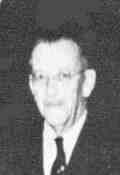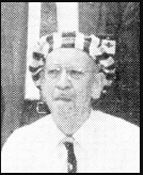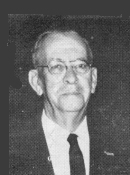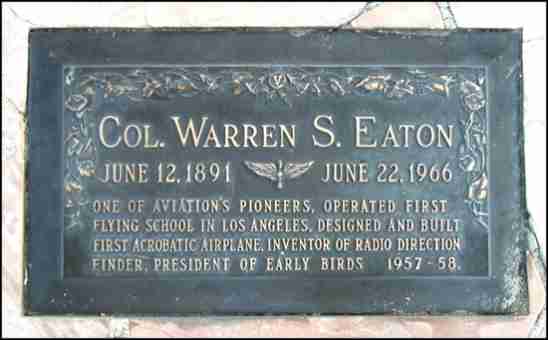


1891-1966 |
 |
 |
 |
May 18, 1956 |
Nov, 1958 |
June 9, 1961 |
WARREN SAMUEL EATON’S LIFE As remembered by his sons: James E. and Warren B. Eaton After hearing about the success of the Wright Brothers, Warren determined to build his own aircraft. He formed the Eaton Bros. Aircraft Company with his brother Frank in the Baldwin Hills of Los Angeles. The company built several aircraft and Warren flew his first solo in June of 1909. During that time he taught some 26 pupils to fly, one of which was the first Chinese to accomplish that feat. He also convinced his mother to go up with him, so the first mother- son flight occurred. Later, Warren teamed with Mr. Lincoln Beachy and barnstormed across the United States. He designed and built the Beachy planes. During the Tour they also teamed up with the famous race car driver of that time, Barney Oldfield, and raced around the race track. In fact, while in front of the Grand Stand Beachy would lower his wing and Oldfield would reach out and make contact. Warren designed the monoplane that allowed Beachy to fly the first loop-the-loop of that day. Warren stayed with Mr. Beachy until Beachy’s fatal crash in the Bay of San Francisco. Warren then went to work for Glenn Curtiss assisting in the design and manufacture of the Curtiss amphibian Aircraft. When the U.S. Government established licensing for pilots, Warren Eaton was issued License Number 85. A short time later, at the beginning of WWI, Warren was employed by the U.S. Army Air Service at what is now Wright Patterson Air Force Base. There as factory and production engineer he assisted in the design and manufacture of the DeHaviland DH-4 Bomber, which was the only U.S. built aircraft to see combat during WWI. After the war, he went to work for Universal Pictures and developed miniatures to be used in movies. He built a set of San Francisco which was used to depict the destruction of the city during the 1906 Earthquake. He also constructed a copy of the Notre Dame Cathedral used in the “Hunchback of Notre Dame” movie. In the interim Warren became interested in radio and built his own set. He noticed that when turning the aerial, the sound increased when pointed in the direction of the station. At that time the Government was flying the first Air Mail and pilots would become lost when they could not follow roads or railroad tracks, particularly in stormy weather. Warren put two and two together and designed the first Radio Direction Finder (RDF) or as it became to be known, the Radio Compass. This was in the mid 1920’s. There was a public demonstration at the 1928 Air Meet in Los Angeles, followed by official demonstrations in Washington, D.C. before Army, Navy, Department of Commerce and the Bureau of Standards that same year. Built to Army specifications and after passing tests Warren delivered to the Army the first radio Compass. December 1928 through May 1931. He secured the first 12 basic Patents covering and controlling automatic radio navigational aids 1932-1935. Just prior to the start of WWII, government official recalling Warren’s WWI production expertise, asked him to accept a commission in the Army Air Corps to assist the nation. He accepted a commission as a Major and was assigned to the Boeing, Douglas, Vega Aircraft Committee. There he acted as an Army liaison. The committee assured the standardization and interchangeability of the building of the B-17 aircraft that was taking place in the west coast factories. As the war progressed, Warren had many and varied assignments but primarily in Maintenance and Supply areas. He established these functions at three bases whose primary goal was training pilot in B-17, B-26 and B-29 aircraft. He had been promoted to Lt. Colonel and finished serving the country on the staff of the 2nd Air Force at Colorado Springs, Co. Warren could not rest too long and he became interested in medicine. Noticing that his doctor was having trouble listening to his heart and tying it in with his expertise in electronics he developed the first electro cardio machine. Again he held the basic patents. Before he "Folded His Wings", he saw man land on the Moon and return to the Earth. Warren Samuel Eaton’s two sons followed in their father’s footsteps. Both spent their lives associated with Aviation and Space until their retirement. Warren B. Eaton retired from the Air Force and James E Eaton from N.A.S.A. There are two albums of Warren S. Eaton’s achievements in the library of aviation at Balboa Park, San Diego, California. |
It was recalled that Warren Eaton had first attempted to fly in an ornithopter in 1908, while associated with Prof. H. Laverne Twining at the Los Angeles Manual Arts High School. Success came the following year with a Glider and then with powered machines. With his brother, he established the first aircraft factory in Southern California, and also one of the first flying schools -- a true pioneer if there ever was one. Warren's career was culminated during World War II, when he became a Lieut. Col.in the U. S. Air Force. Warren's activities as the National President of Early Birds, and as the head of their activites in the Los Angeles area, have been well known to most E.B.'s and they have all learned to love him for his devotion to our organization. July 1961, Number 66 |
 |
|
In 1910 Eaton and his partner Prof. Twining were the first members of the Aero Club of California to build a monoplane which flew.
Eaton built airplanes for daredevil pilot Lincoln Beachey and was later General Manager of the Chaplin Air Line which flew Curtiss sea
planes to Catalina.
He is buried in The Portal of the Folded Wings, The Shrine to Aviation and Museum in North Hollywood, CA. From The Early Birds of Aviation Roster of Members, 1996 |
|
If you have any more information on this Early Bird, please contact me. E-mail to Ralph Cooper Back 

|